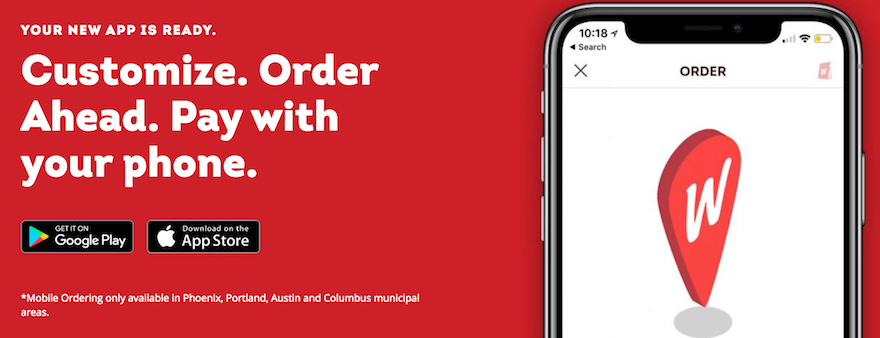10 Omnichannel Retail Trends to Watch Out For
Our independent research projects and impartial reviews are funded in part by affiliate commissions, at no extra cost to our readers. Learn more
These days, few people buy only from brick and mortar stores. With the COVID-19 pandemic accelerating online shopping’s already burgeoning popularity – and almost 84% of the world owning a smartphone – there are now more ways to shop than ever.
Enter omnichannel retail: an approach to selling online that unifies the customer experience across all touchpoints (not sure what omnichannel selling is? Read our guide).
But what is omnichannel retail – and why should your business get to grips with it? More importantly, what are the key trends shaping omnichannel retail’s future?
Read on – we’re breaking down the top 10 omnichannel trends you need to watch out for.
What Is Omnichannel Retail?
Omnichannel retail is an integrated approach to commerce. Its goal? To unite multiple customer channels to provide a consistent, convenient customer experience across different devices and touchpoints. That includes people shopping:
- In-person, via your brick and mortar store
- Online, via your website or social media
- In-app, via their smartphone
For an omnichannel retail strategy to succeed, it requires all your systems, technology, and departments to be working together. That includes your website, social media channels, customer service calls, live chat conversations, and – of course – your brick and mortar store.
The idea isn’t simply to offer customers multiple ways to shop (although that kind of flexibility and convenience is good!). It’s to enable customers to dip in and out of different channels, while still maintaining a consistent, uninterrupted user journey.
Therein lies the difference between omnichannel and multi-channel.
Both approaches utilize several sales channels. However, while omnichannel approaches integrate those channels – meaning customers can jump from one to another without any jarring shifts – multi-channel ones stand alone, isolated.
We have another article about omnichannel customer experience if you want to know more.
Basically, omnichannel is the way to go. So what are the key trends?
10 Omnichannel Trends
Now you know what it is, it’s time to find out which way the winds of omnichannel retail are blowing.
Here are our top 10 omnichannel retail trends to keep an eye out for this year.
1. Online Stores Open Brick and Mortar Locations
As the internet flourished and having an online presence became a must-have, we saw a lot of brick and mortar businesses turning to ecommerce to expand their offering.
Now, what we’re seeing is the opposite – businesses that once sold only online turning to the high street, and opening brand-new brick and mortar stores.
And it’s easy to see why online retailers are turning to physical premises. Not only are the costs of acquiring customers online continuing to balloon, but – from a customer perspective – there’s still no pleasure quite like trying on an item in-store (and taking it home immediately!).
One recent study suggested that almost a third (32%) of brands plan to establish in-store or pop-up experiences. Should your business follow suit?

2. Showrooming Continues
For a time, it seemed the age of showrooming – customers inspecting a product in person, to then later buy it online at a lower price – was dead in the water.
Not so – because, with the rise of omnichannel retail, showrooming constitutes a vital part of that unified experience. After all, 75% of respondents, when asked their top reason for shopping in-store, was being able to see, touch, feel, and try on items.
Showrooming lets customers do this. And, because retailers require less space than they would housing saleable stock, it saves them money, too.

3. Buy Online, Pick Up In Store (BOPIS)
We know that being able to take purchases home immediately is one of high street shopping’s greatest appeals (in a survey from Delighted, 62% said it was their main reason for shopping in-store). But online shopping still has an undeniable pull.
The strength of a BOPIS approach, then, is that it blends the two. Consumers can buy online, then pick up from a store – or even a small distribution center, if a business doesn’t have a store – near them.
Merging two fundamental aspects of the omnichannel experience, BOPIS is a trend that’s here to stay.

4. A Greater Focus on Community
A whopping 71% of consumers prefer buying from brands that align with their values. So, in 2022, brands can no longer focus solely on what they sell – that is, on their products or services alone – but what they stand for.
This means a greater focus on community – something the right omnichannel strategy can help with.
Because of its focus on an integrated approach, omnichannel retail can help your brand broadcast a consistent, compelling message. This, in turn, will help like-minded consumers understand and resonate with your brand. They’ll tell their friends and recommend your business. And you’ll be on your way to cultivating a community.

5. Contactless Transactions
Though the tide of the coronavirus pandemic is, it seems, finally receding, it’s left an indelible mark on commerce.
Before COVID-19, being able to take contactless transactions – as opposed to chip and pin or cash only ones – was a nice-to-have. Now, it’s a must have.
Whether it’s being able to order online and pick up from a digital locker, having goods delivered straight to your customer’s home, or letting them pay in-store without touching a surface, contactless transactions are picking up pace in a post-pandemic world.

6. Using Social Media to Sell
With Facebook, TikTok, Instagram, Twitter, WhatsApp, and Pinterest all supporting social commerce – and 36% of internet users in the US expected to make at least one purchase this way in 2022 – selling through social media is a core aspect of the omnichannel approach.
But remember, the key to omnichannel retail is integration – ensuring that crucial consistency between platforms. So if you are selling through social media, remember to also make sure you’re providing customer support through it (i.e. on Facebook Messenger, or via Instagram DMs), and that your social media accounts are linked to your website and CRM (Customer Relationship Management) system.

7. More Personalization
Three-quarters of consumers want to buy from brands that offer personalized experiences. And an omnichannel approach to retail allows yours to do just that.
With a set of integrated, unified channels, you can remember customers’ previous orders – even down to their shoe size – and offer them tailored discounts on products they’ve already viewed or added to cart.
You can draw upon social media for deeper insights into consumer behavior, and – if you’re anything like fashion box providers Stitch Fix – use customer preferences to tailor a monthly subscription package to individual styles.

8. Supply Chain Collaboration
Even in today’s connected, globalized world, supply chains still aren’t as optimized – or organized – as you’d expect.
Data gets siloed; inefficiencies aren’t addressed. And the litany of parties involved (suppliers, 3PL companies, shipping carriers) doesn’t make collaboration easy. The problem? Retailers not having a good enough idea of where inventory levels are at. This means that, all too often, consumers are adding items to their carts, only to find the stock is already sold out.
So expect more supply chain collaboration. That’ll involve the sharing of real-time data, AI-powered analytics, and full end-to-end visibility. The result? More transparency around stock levels and faster, cleaner, more resilient processes from supplier to retailer (and, ultimately, to the end user).

9. Virtual Shopping Assistants
Shopping assistants have always been a feature of the in-store shopping experience: following us around, checking stock levels, and guiding us through the purchasing process.
It makes sense, then – from a truly omnichannel perspective, that is – for online stores to offer this as well.
Here, we’re talking about chatbots – ”virtual” shopping assistants that act like automated live chat features. They can signpost consumers to certain products, pages, and parts of a website, while also assisting with any post-purchase processes and enquiries. Meaning they’re an excellent way of providing online customer service.
77% of executives have already invested in chatbot technology. Why wait?

10. Online Data for the Offline World
In the world of ecommerce, sellers have so much data to draw upon.
In addition to knowing what’s selling best, online retailers are aware of which products get the most views (and reviews), as well as collecting plenty of info about the shopper. That could be anything from demographic details – name, address, age – and individual product preferences, to IP address and geographic location.
This data typically hasn’t been available to in-store merchants. However – with the rise of exciting new omnichannel retail trends, and more and more merchants selling both in-store and online – that’s changing.
What we’re beginning to observe is the application of online data to the offline space. That involves retailers using info gleaned through offline sales to boost profits from their brick and mortar stores: be it through tailored offers and discounts or flash sales to capitalize on emerging topics and trends.

Summary
Unlike multi-channel selling, omnichannel retail is more than a commercial strategy, or a way of merely making money. It’s an ethos. One that stands for a slick, smooth, seamless customer experience, and calls for a consistent, convenient, and unified approach across all sales channels and touchpoints.
But to truly understand what omnichannel retail is, you need to understand where it’s going. So let’s quickly recap those top 10 trends:
- Online stores opening brick and mortar locations
- Showrooming continues
- Buy online, pick up in-store
- A greater community focus
- Contactless transactions
- Using social media to sell
- More personalization
- Supply chain collaboration
- Virtual shopping assistants
- Online data for the offline world
Now you’re on your way to understanding the future of ecommerce omnichannel trends, why not stick around and explore more of our content for online businesses? Learn how to promote your website, and – once it’s ticking over – how to attract the right customers to it. Good luck!
FAQs
Rather than several isolated, standalone platforms through which to buy, omnichannel businesses connect these – meaning customers can hop from one to another without any jarring shifts in the overall experience.
Leave a comment